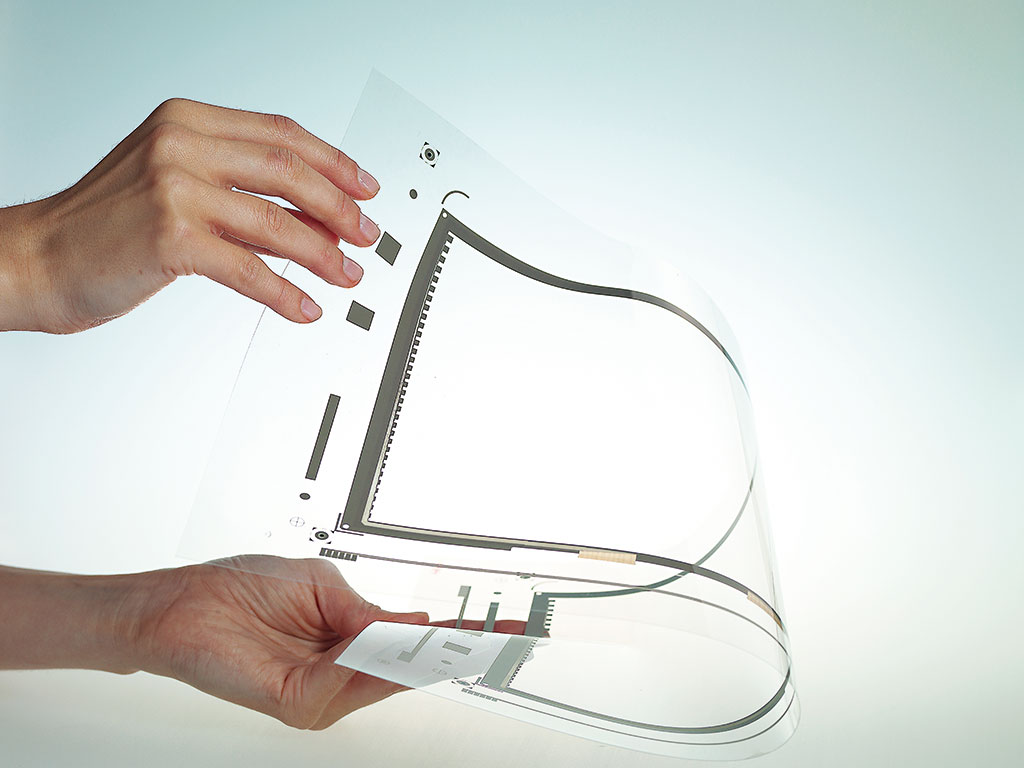Canatu’s flexible sensors allow for touch capabilities on any surface
Mobile phones with keypads now seem like a distant memory. Flat phones could soon follow suit, with bendable touch interfaces a reality thanks to Canatu

Canatu's bendable screen technology will transform smartphones
When it comes to consumer electronics, design is by far the most important factor. Since the individual components of most products are often similar, how they are put together becomes the differentiating factor for consumers. Not very often is there a fundamental enough change in technology to allow for creative new designs. However, thanks to an innovation in flexible touch sensors from Finnish research company Canatu, the design possibilities for touchscreens will soon be almost limitless.
Canatu has produced and patented flexible touch sensor technology, allowing for touchscreens to be made curved and bendable. Erkki Soininen, Vice President of Marketing and Sales at Canatu, explained the design of mobile phones has been one area that has already undergone major evolution in the past, and is set for more in the future. “They were more rigid, heavier and had buttons”, explained Soininen. “Now they are easier to use. Instead of a small screen, the screen is over a larger surface and is more user-friendly. User experience design is the important thing today, and is an integral element of phones, tablets and any apparatus with a screen.”
Because of the stretchable, bendable and flexible nature of the carbon nanobud material, and the fact that it can be deposited on an array of substrates and materials, Canatu’s touch sensors offer touch possibilities on almost any surface
While mobile phones boasting large screens are now all the rage, Soininen noted the size of these devices is becoming an inconvenience. As people are not willing to settle for a device that doesn’t have a large screen, flexible screens can give customers both size and convenience.
“Bendable and foldable solutions offer consumers a user-friendly choice”, said Soininen. “Think about folding your screen and placing it in your pocket, or simply wrapping your mobile around your wrist when going to do something. With a flexible material, anything is possible.”
Carbon craft
Canatu has invented and patented carbon nanobud technology that allows touch sensors to be applied to material of virtually any shape. Carbon nanobuds are a hybrid of carbon nanotubes and fullerenes, a kind of ‘cage’ made up of carbon atoms, creating a bendable and stretchable material. Soininen explained that, unlike current touch sensor technology, Canatu’s sensors do not lose conductivity when bent.
“We do rigorous bending tests to prove this. With 100,000 bends, there is no loss in conductivity”, he said. “This is a real competitive edge, as the leading conductive film material used in displays currently, indium tin oxide, cannot be bent. It is a metal and, when bent, conductivity is broken. Indium tin oxide displays can only be flat.”
Carbon nanobuds, on the other hand, can be placed on a very thin underlying surface, meaning components can remain as small as possible. They also will not cause any more distortion of a screen’s image than current touch sensor technology.
“Because of the stretchable, bendable and flexible nature of the carbon nanobud material, and the fact that it can be deposited on an array of substrates and materials, our touch sensors offer touch possibilities on almost any surface”, said Soininen. “With a bending radius of one millimetre, compared to the typical six millimetres for other materials, touch can be used on the sharpest of edges.”
It’s not just smartphone makers who are interested in non-flat touchscreens, with any device that currently uses buttons now a candidate for touch technology. Soininen said carmakers are a good example. “Just as with other displays, the automotive industry is fast replacing outdated interiors with modern designs. Our 3D formable films and touch sensors enable many design possibilities. Not just flat surfaces, but functional and sleek interior designs with curved edges and built-in touch applications. Imagination is the only limitation to the endless design possibilities of carbon nanobud technology.”













